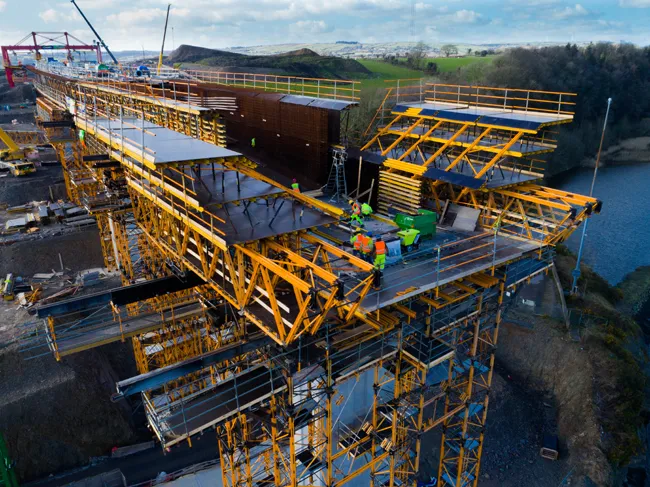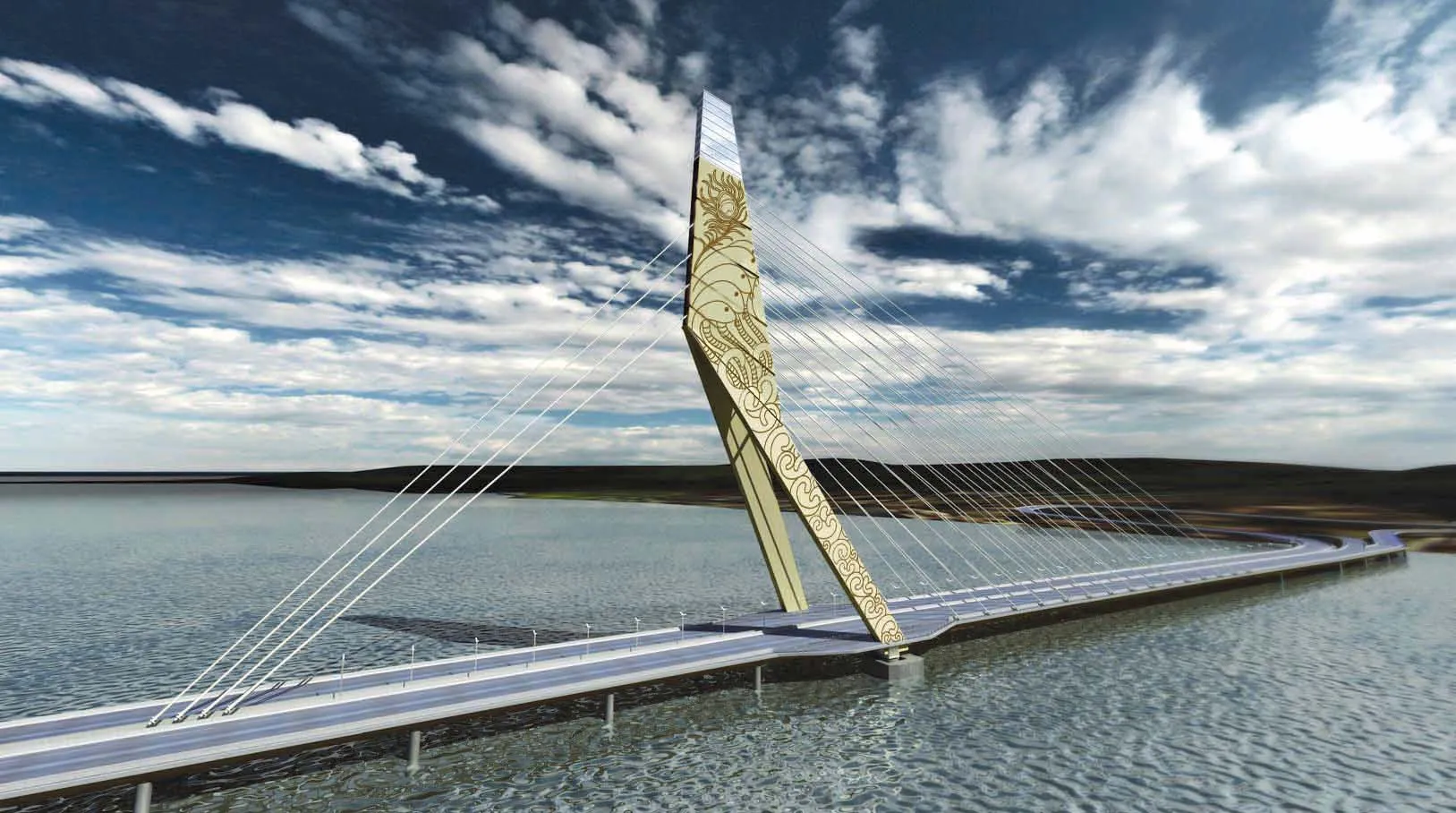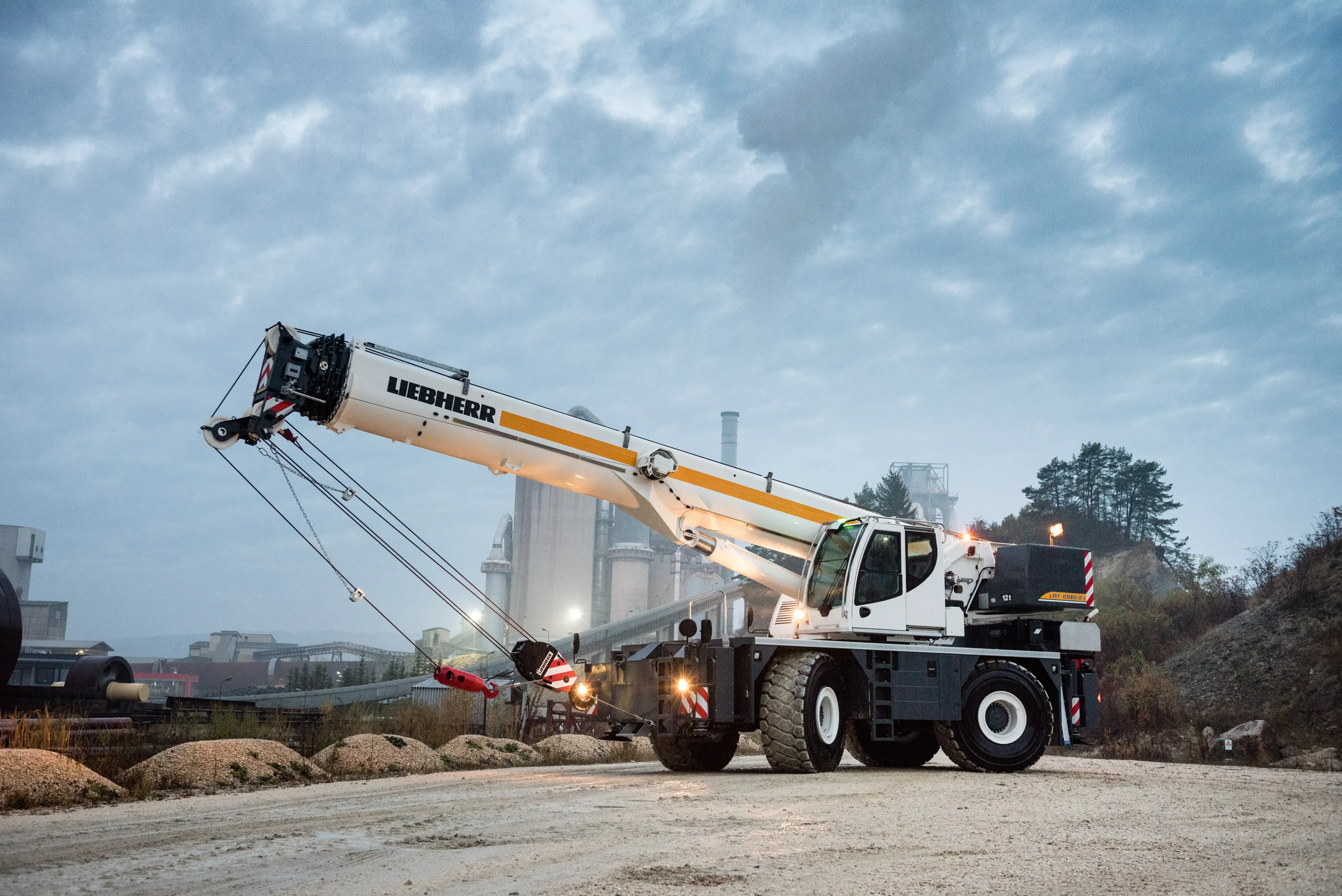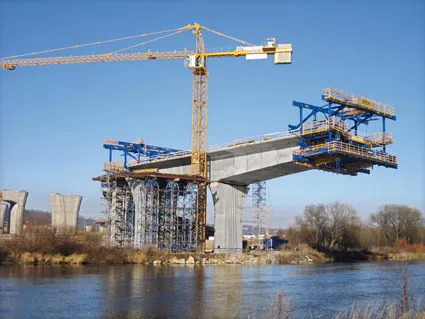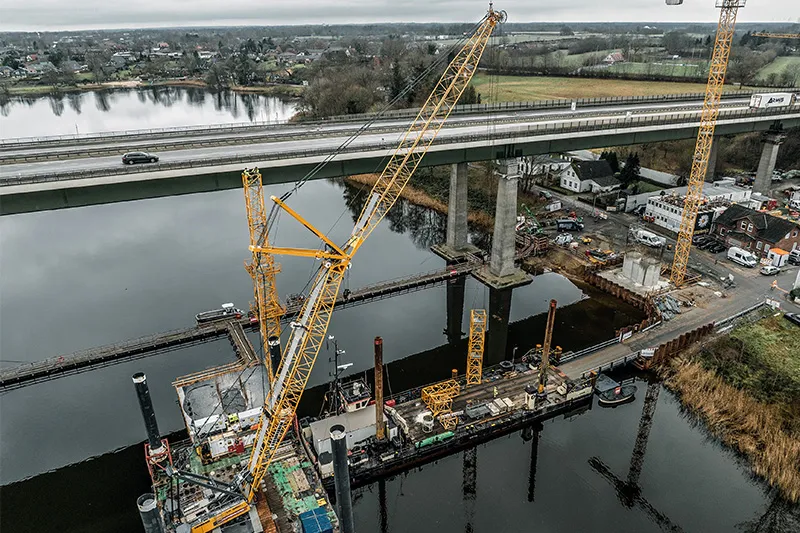
Measuring just under 1.5km-long, it is Germany's second-longest steel road bridge and plays an important role in the flow of traffic to and from Denmark and the Scandinavian peninsula. But the bridge is approaching the end of its useful life as a result of high traffic volumes; a rebuild and simultaneous widening of lanes has become necessary as result of increased vehicle usage.
In water, on land
Strong support for this major construction project is being provided by 18 Liebherr cranes from the rental fleet of the contractor Friedrich Niemann, based in Kronshagen near Kiel. Five fast-erecting cranes, two 65 K.1s and three 81 K.1s, are on site to assist with the foundations. The new bridge piers are being built with the help of six 125 EC-B and seven 150 EC-B flat-top cranes.
Conditions on site are responsible for some spectacular crane assemblies. The first crane to arrive on the construction site, a 125 EC-B, was assembled at the end of 2023. Assembly took place in the waters of Lake Borgstedt, where the crane stood on the first pier’s pile cap secured by foundation anchors. This involved working with a Liebherr crawler crane from Nenzing (Austria).
The 250-tonne LR 1250 crawler crane required for the assembly was positioned on a floating platform between the crane site and the ferry that was used for transporting parts. The flat-top crane reached a hook height of 44m. Three 125 EC-B cranes were also assembled using the 250-tonne crawler crane, from its floating platform on the water.
The cranes were initially assembled at a height of 30m and then climbed to their final hook height of 50m using hydraulic climbing equipment. This allowed them to work some 15m above the height of the roadway.
A 150 EC-B 8 Litronic started by working on the bridge pier on land. But the progression of the site required the crane to be moved to a new location. At the end of this June, it was time: the flat-top crane was moved from the north side of the bridge to the next bridge column and reassembled in the water. The disassembled crane was transported to its new location on a ferry and put back together again with the help of a 220-tonne crawler crane on a floating platform.
Once assembled, it climbed to a hook height of around 50m and reached a jib length of 40m. The crane has the capacity to lift up to eight tonnes.
Liebherr project department
Precise planning was required in advance for the use of the cranes and Liebherr’s own project department for large and special projects (Tower Crane Solutions, TCS) provided valuable support. A major challenge lay in the cranes being assembled by the crawler crane on the floating platform.
As the permissible hook height of the crawler crane on the floating platform was restricted, the assembly height had to be kept as low as possible. However, a certain tower height was also necessary so that the cranes could be climbed. Various options and tower systems were therefore investigated in the run-up to the project in order to find the best solution.The configuration of the tower combinations was another major issue prior to planning crane operations; it was essential to prevent the towers from colliding with the newly erected bridge piers and any potential tower deformations.
Consequently, the fast-erecting cranes are only partly using their maximum hook height. The two 65 K.1 cranes are in use with their tower retracted as they slew under the bridge and the three 81 K.1 cranes are also assigned to work under the bridge as well as at maximum height above it.
The 13 flat-top cranes are assembled in a free-standing position on crosses and foundation anchors; some of them are set in concrete in the water. They are working with a hook height of between 49m and 68m. The hydraulic climbing equipment has been provided by the Liebherr Tower Crane Center, the Liebherr partner for special crane hire, crane components and used machines direct from the manufacturer.


